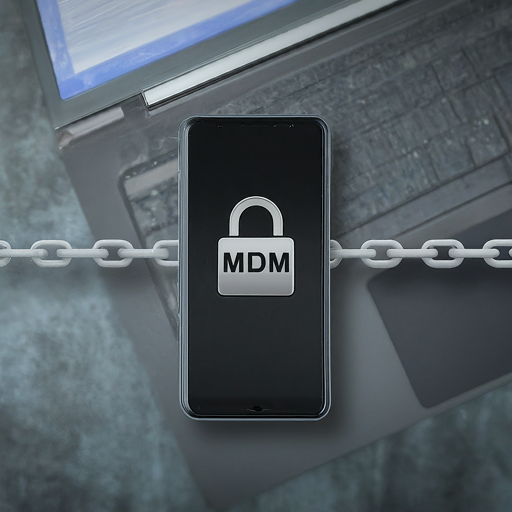Images: Google Gemini
Security risks, data management issues, and device synchronization are common headaches for IT departments. Thankfully, Mobile Device Management (MDM) offers robust solutions that empower businesses to overcome these obstacles effectively.
By ensuring secure access to corporate data and enabling seamless communication among teams, MDM tools revolutionize remote work dynamics. Let's explore how integrating MDM can transform your business operations and lead to greater efficiency.
Why Is Mobile Device Management Crucial for Remote Work?
Key Challenges Addressed
MDM tackles several core issues inherent in remote work setups:
- Security Assurance: Ensures robust security protocols are in place to protect sensitive data across all devices.
- Device Tracking and Monitoring: Offers real-time insights into device location and usage, helping prevent unauthorized access or loss of data.
With these systems, businesses not only streamline operations but also fortify their cybersecurity measures against modern threats significantly.
Such tools make it easier to focus on strategic goals rather than constantly troubleshooting IT issues (and isn't that a relief for everyone involved?).
Advanced Insights into Mobile Device Management Software Solutions
When selecting the appropriate Mobile Device Management (MDM) software, it's paramount to consider specific technological adaptations and functionalities that align with business needs.
For instance, Kandji emerges as a superior choice for businesses heavily invested in Apple ecosystems, due to its specialized agent-based approach and comprehensive features like patch management and fleet monitoring.
- Agent-based Architecture: Unlike traditional MDM solutions that may operate purely over-the-air, Kandji uses agents, which enhances security protocols and provides deeper access controls specifically designed for Apple devices.
- Specialized Features: From asset tracking to onboarding processes, Kandji covers an extensive range of functionalities that streamline operations for iOS and macOS devices.
For environments where device diversity is substantial, solutions like Miradore Mobile Device Management offer a versatile platform. Its compatibility across Windows, macOS, iOS, and Android ensures a unified management experience across all operating systems.
- Cross-platform Support: A significant advantage when managing a mixed-device environment; essential for ensuring seamless policy implementation and security management.
- Scalability Options: Adaptability through both free and paid models allows organizations to scale up as their device ecosystem grows or changes over time.
Moreover, considering the evolution from MobileIron to Ivanti Neurons for MDM signifies more than just rebranding; it indicates significant improvements in managing modern mobile and desktop infrastructures efficiently under the Ivanti banner.
Reflecting on these solutions reveals crucial aspects: the adaptability of features according to device ecosystems (such as specialized versus universal platforms) and the enhancement of security measures with modern technological approaches.
What strategic alignment does your organization prioritize when choosing software for mobile device management? This reflection can guide more informed decision-making in optimizing remote work through effective mobile device management.
Take Action: Boost Your Business with MDM
Implementing Mobile Device Management is not just about technology adoption; it's a strategic move towards more agile and secure business operations. Consider these critical aspects:
- Enhanced Security: MDM provides encrypted data transfer, secure access points, and threat detection mechanisms that safeguard your company's sensitive information.
- Increased Productivity: Employees gain access to necessary tools and resources efficiently, irrespective of their physical location.
However, this technology comes with its set of challenges:
- Initial Setup Complexity: Setting up an MDM system can be intricate and time-consuming.
- Training Requirements: Staff might require training to adapt to new systems effectively.
Recognize the historical shift (just as businesses transitioned from typewriters to personal computers in the late 20th century) and how transformative MDM can be.
Top Benefits of Mobile Device Management for Remote Teams
While MDM offers remarkable control and efficiency benefits, it's important not to underestimate the cultural impact (sometimes it feels like Big Brother is watching) of such systems on your team.
- Centralized Control: Supervise all enterprise mobile devices from a single dashboard, simplifying IT management.
- Policy Enforcement: Automatically enforce compliance policies across devices to ensure every team member adheres to company standards.
- Streamlined Software Updates: Push updates to all devices simultaneously, ensuring that everyone works with the latest software.
However, when implemented sensitively and transparently, MDM can significantly enhance trust and productivity among remote teams.
Less Is More: Embracing Simplicity with MDM!
Yes, minimalism isn't just a trend in lifestyle; it applies powerfully to technology management too. Adopting Mobile Device Management strips away the complex layers of managing multiple devices manually. Imagine trading a cluttered desk for a clean workspace!
With MDM, you centralize control and reduce operational noise, allowing your IT team to focus on innovation rather than constant maintenance.
This shift not only cleans up processes but also clarifies roles within your organization. Clear responsibilities and simplified workflows lead to increased productivity and decreased stress levels, like turning off notifications when you need time to focus.
Let's sum it up: simplicity through MDM not only tidies tech environments but also perfects performance metrics! Ready to streamline for success?



